From the Cairo Airport
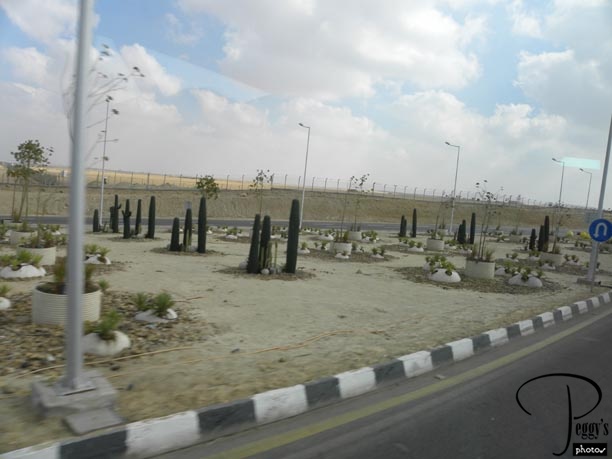
This morning, we were to be sitting on our bus by 5:15 a.m., which must have meant a wake–up call before 4 a.m., to catch a 7:30 a.m. Egypt Air flight from Luxor to Cairo. The ship’s restaurant opened early so we could have breakfast. However, our plane was delayed over two hours, surprising since all the twice per hour flights to Cairo except ours all left on time. The flight was a little over 1 hour and was over miles and miles of desert terrain. Photo: Nicely planted area on the side of the highway.

From the Cairo Airport
From the Cairo Airport
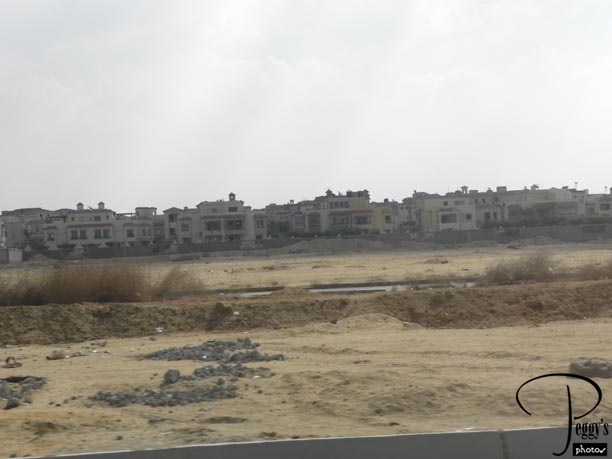
One of the first housing developments that we passed on our drive from the Cairo airport. Amro told us that homes here cost from $1 million US to $20 million US. Many Iraqis live here.

From the Cairo Airport
From the Cairo Airport
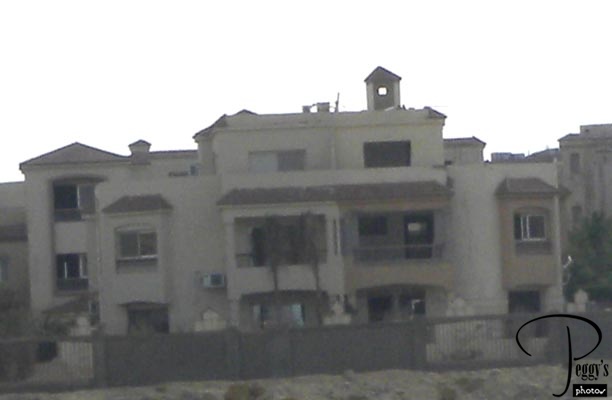
Close–up of one of the expensive home––no land, just a big house.

From the Cairo Airport
From the Cairo Airport
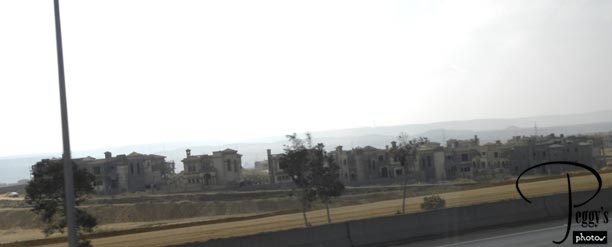
Another expensive development that we passed.

From the Cairo Airport
Approaching Central Cairo
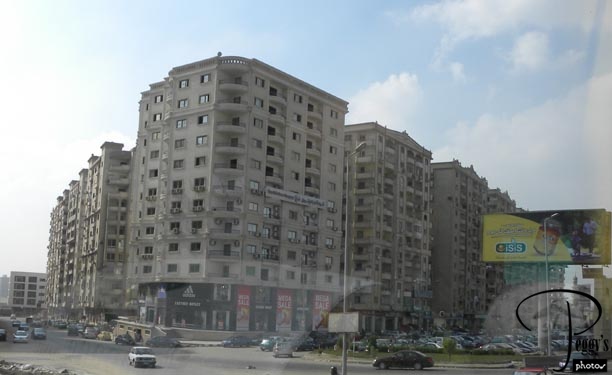
Now we are probably in the $1/2 million US range for an apartment in one of these buildings.

Approaching Central Cairo
Central Cairo
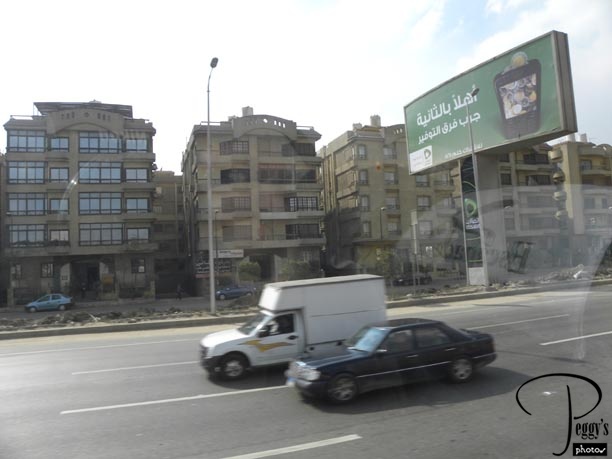
More apartments probably in the same range.

Central Cairo
Central Cairo

An attractive area with a large mosque.

Central Cairo
Central Cairo
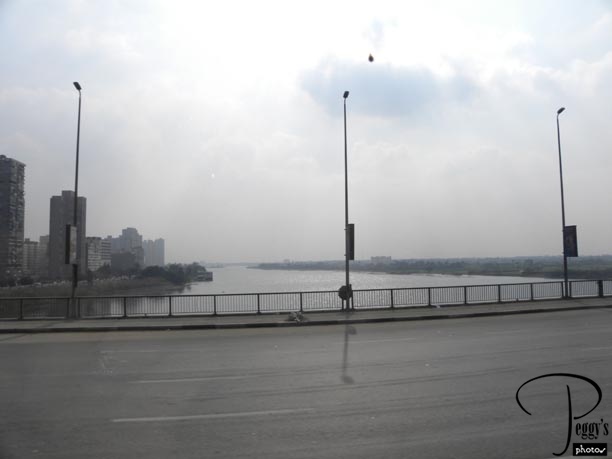
Crossing the Nile.

Central Cairo
Central Cairo
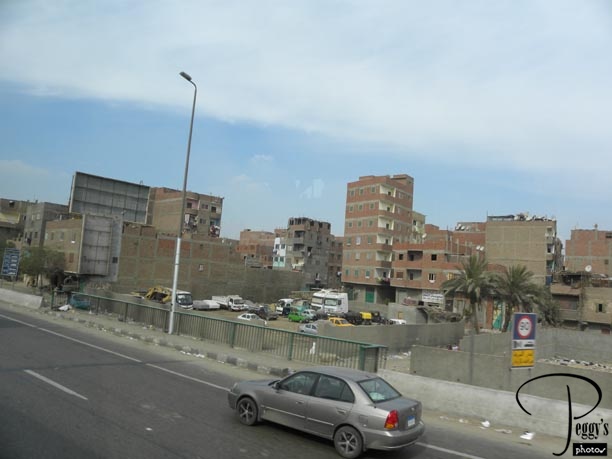
I don’t know the price range for apartments in these buildings, but many families buy apartments here for future use and then leave them unfinished (adding windows and balconies, etc., later) due to tax reasons. Amro told us that a future change in the tax structure was coming that would increase the tax on these unfinished units.

Central Cairo
Central Cairo
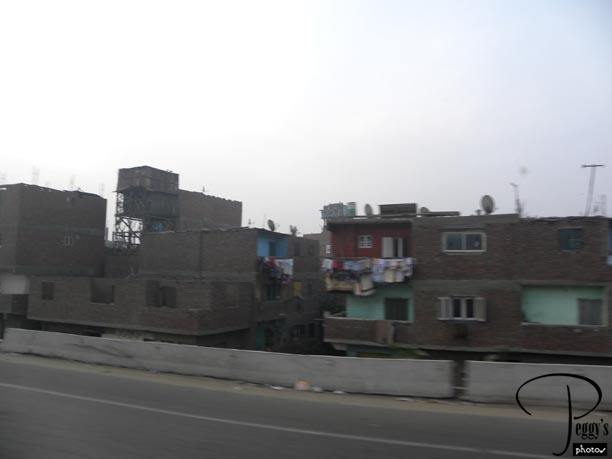
Lesser units, many in extremely poor condition and placed haphazardly. Amro told us that, in the last 10 years, these buildings started going up without government permission. If you look down on the ground, there is water seepage and much trash. Amro also told us that the Murabak government was planning to tear this buildings down and replace them with modern buildings, but without any plans for new housing for the buildings’ residents.

Central Cairo
Central Cairo
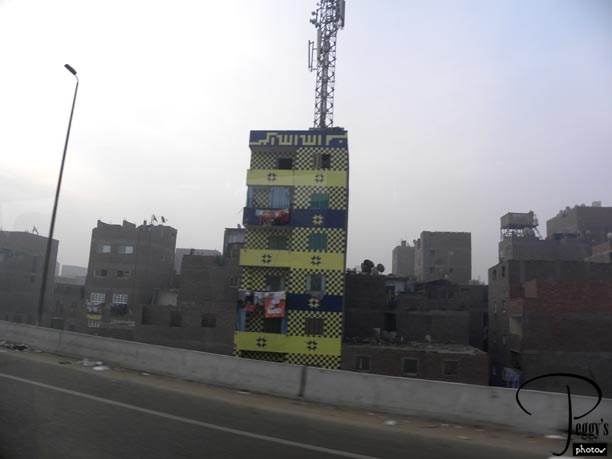
An interestingly decorated building.

Central Cairo
Central Cairo
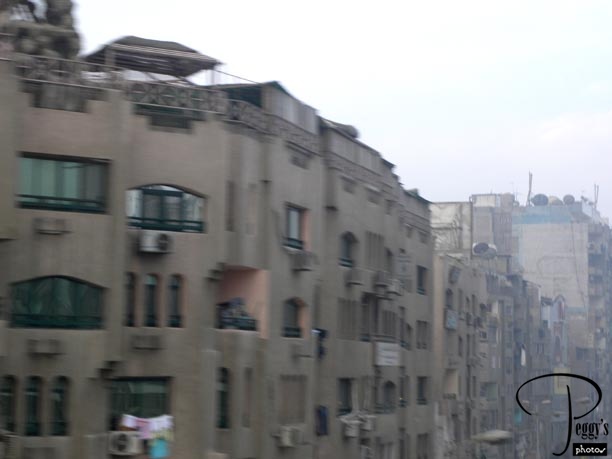
A row of high rises.

Central Cairo
Away from Central Cairo
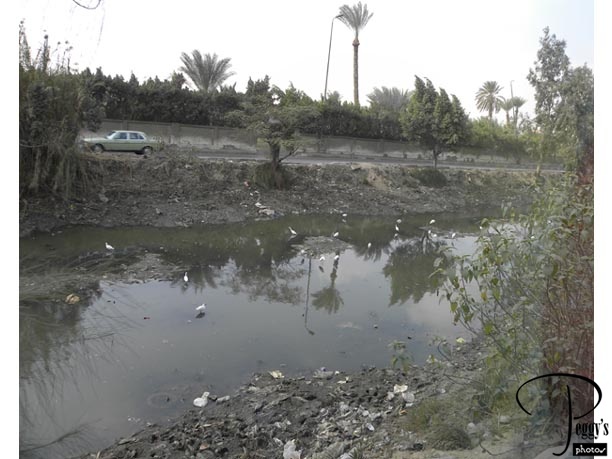
This canal is being filled in as it now longer is in use. In the meantime, it serves as a trash dump. These birds seem very happy to make it their home.

Away from Central Cairo
Away from Central Cairo
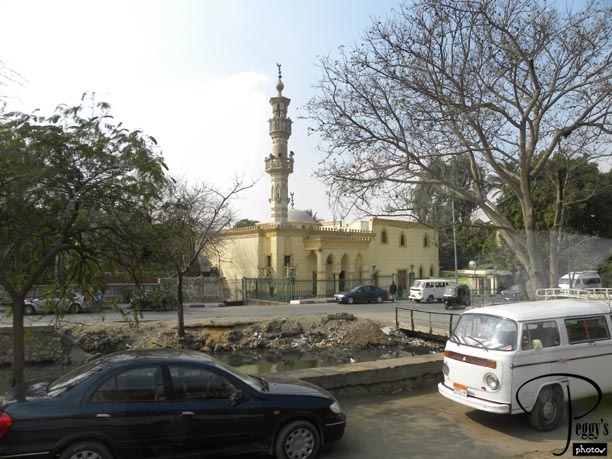
A mosque that we passed.

Away from Central Cairo
Away from Central Cairo
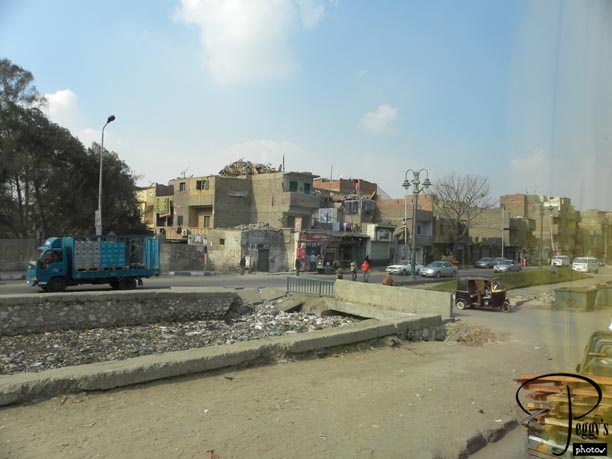
Farther along.

Away from Central Cairo
Away from Central Cairo
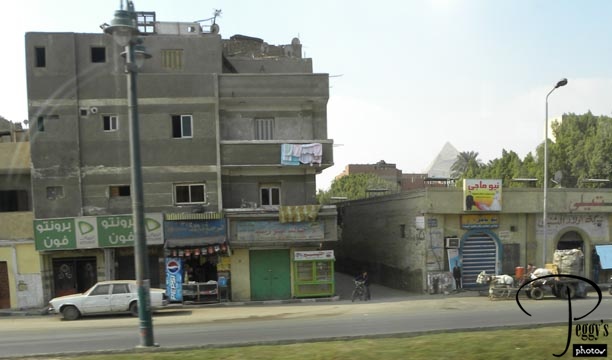
Ah, you can see one of the Giza pyramids in the background.

Away from Central Cairo
Away from Central Cairo
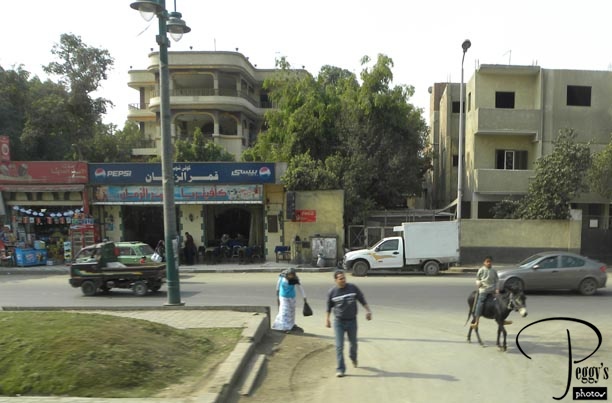
A donkey being ridden in the city.

Away from Central Cairo
Away from Central Cairo
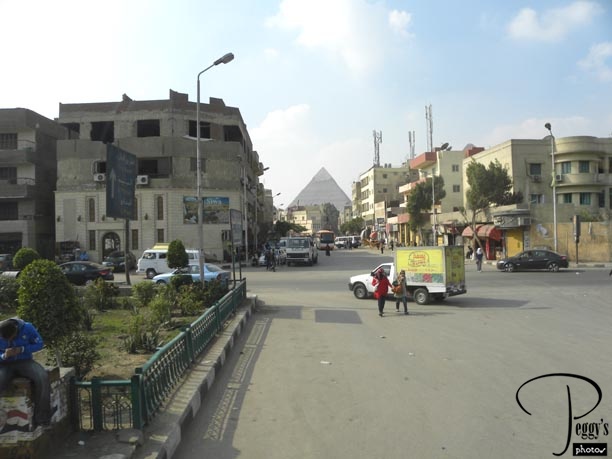
Just walk down this street and you will eventually reach the pyramids.

Away from Central Cairo
Away from Central Cairo

Street scene.

Away from Central Cairo
Away from Central Cairo
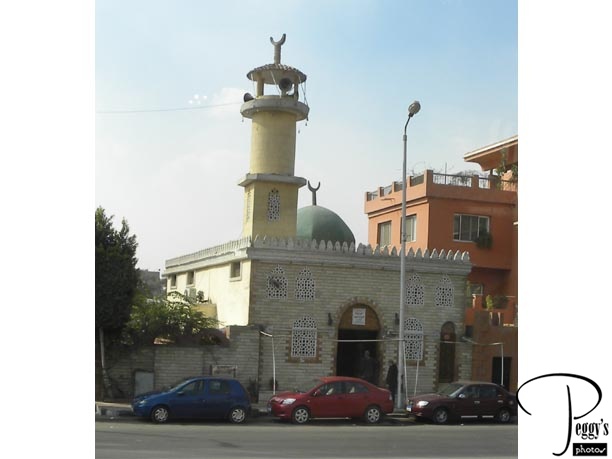
Another mosque.

Away from Central Cairo
Lunch Stop
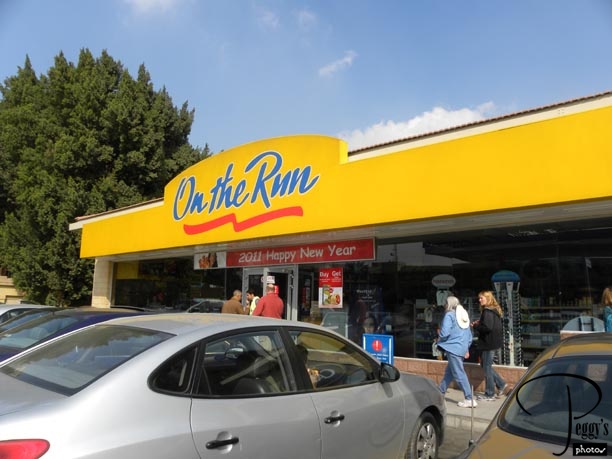
I don’t know what our original lunch plans were if we had arrived in Cairo at the scheduled time, but now the plans were for us to pick up something to eat at On the Run. I bought a turkey sandwich, water, a piece of pastry, and an assortment of American junk food: Snickers, Cheetos, etc. But it was not easy to eat on the bus, first having to remove the lettuce from my sandwich (I remembered that we weren’t supposed to eat raw food except on our Nile boat), and to take photos at the same time.

Lunch Stop
Lunch Stop
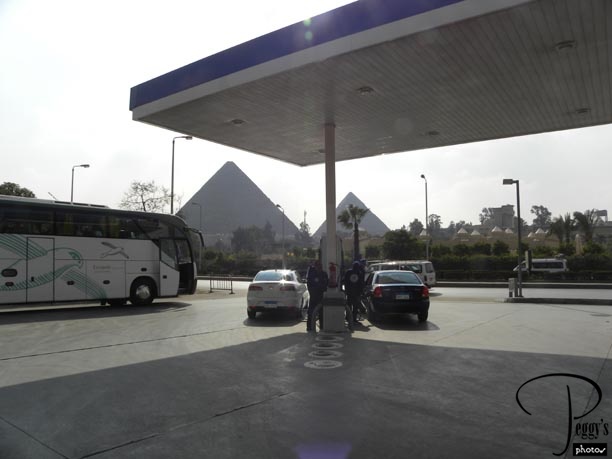
We could see two of the pyramids from our lunch stop.

Lunch Stop
Giza Plateau (See Slide Show)
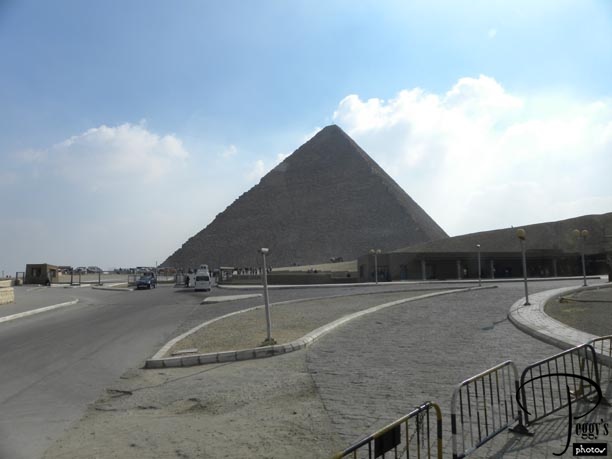
We next drove to the Giza Plateau where Egypt’s most famous pyramids are located. This is the Great Pyramid, Khufu’s Pyramid, in this photo. Right now, you either drive from one pyramid to another or ride a horse or camel or take a horse or buggy ride. You can also walk from pyramid to pyramid, but your walk will be long. A tram to take visitors around the pyramids has been planned––this, of course, would eat into what the horse and camel owners would be making off the tourists. In the LA Times was an article in which the horse and camel owners said they were promised by one of Murabak’s people that if they rode their horses and camels into the protests the tram would not be built. How bad a decision for them to do this will be known in the future.
I have put my photos of the pyramids of the Giza Plateau on a slide show on this website: Go to Slide Shows, Egypt, Giza Plateau.

Giza Plateau (See Slide Show)
Giza Plateau

The three–pyramid complex on the Giza Plateau was built almost 5,000 years ago. Giza became the royal burial ground and consisted of the main pyramids, satellite pyramids, tombs for the kings’ families and royal courts, and temples. The Great Pyramid (on the left of the photo) was built for Khufu (2589–2566 BC); the middle–sized one (in the middle of the photo), for his son Khafre; and the smallest (on the right in the photo), for Menkaure, Khafre’s successor.

Giza Plateau
Camel Rides at Giza
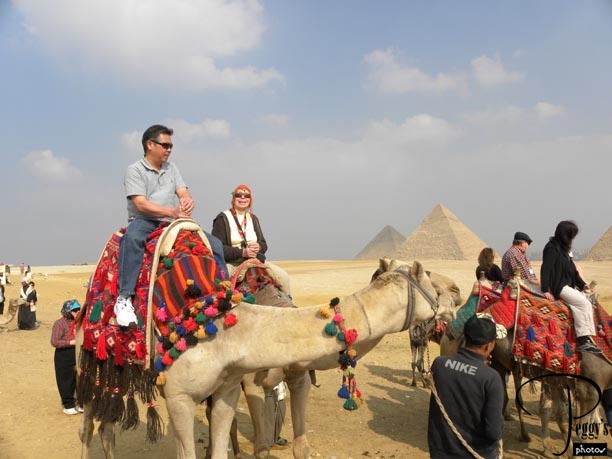
I think we paid $20 for the rides. Amro arranged for us to pay the head camel driver when we got back to the bus so that there wouldn’t be any problem with paying for the rides. We tipped our individual drivers when we got off the camels. That’s me with the headress on––it didn’t turn out to look like I thought it would. I think it needed a head scarf underneath it to show it off. That is Burt on the camel next to me. When I first got on the camel, the camel started taking off down the hill without the driver leading it (this was scary). The only thing I could think of doing was to yell for Amro. This got the attention of the camel driver and later the attention of Amro, who I asked to take photos of me on the camel. This is really a tourist camel ride: we only went down the hill a short way and then back up it again. The sand was hard and the camels feet didn’t even go into the sand. Okay, so I am being a camel ride snob, but I remember the 45–minute camel ride I took in the Sahara Desert in Morocco, with the camel’s feet dipping into the sand, and with my camel being driven by a Berber in Berber dress––all giving me a feeling of being in a movie as it was so fantastic.

Camel Rides at Giza
The Great Sphinx at Giza
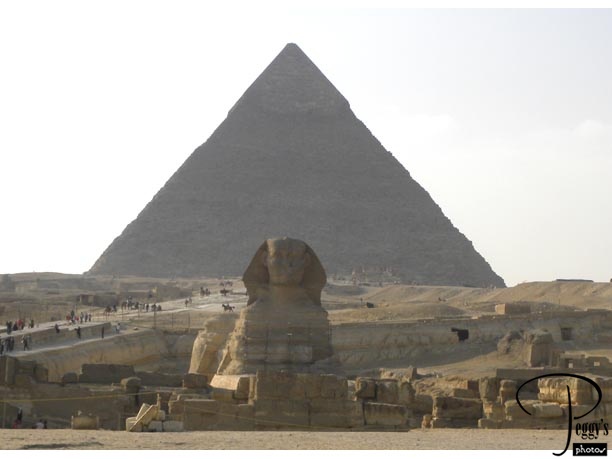
After viewing the pyramids and taking camel rides, we viewed the Great Sphinx, the Guardian of the Giza Plateau. It is in from of Khafre’s Pyramid. This sphinx is about 66 feet tall and about 4,500 years old. To view the sphinx from the side, you walk through the Valley Temple of Khafre, at the bottom left of the photo, which is one of the oldest surviving temples in Egypt. I have put my Giza Plateau photos on a slide show––go to
http://wp.peggysphotos.com/gaza–pyramids–cairo–egypt/ or to Slide Shows under the Menu to Giza Plateau, Cairo, Egypt.

The Great Sphinx at Giza
The Solar Boat Museum
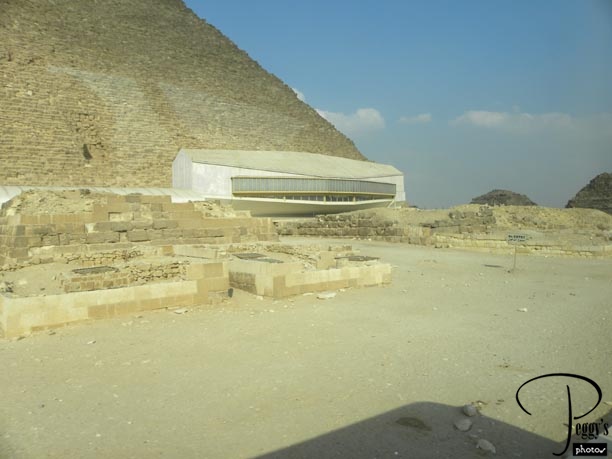
On the south side of the Great Pyramid is the Solar Boat Museum, containing a full–size ancient Egyptian boat that was discovered in 1954 lying in a pit, in 1200 pieces, besides the pyramid. It took 14 years to put it back together. The boat resembles vessels depicted in tomb paintings of the sun–god making daily trips across the heavens––hence, the name “solar boat.”

The Solar Boat Museum
The Solar Boat Museum

A scale model in the museum of the solar boat.

The Solar Boat Museum
The Solar Boat Museum
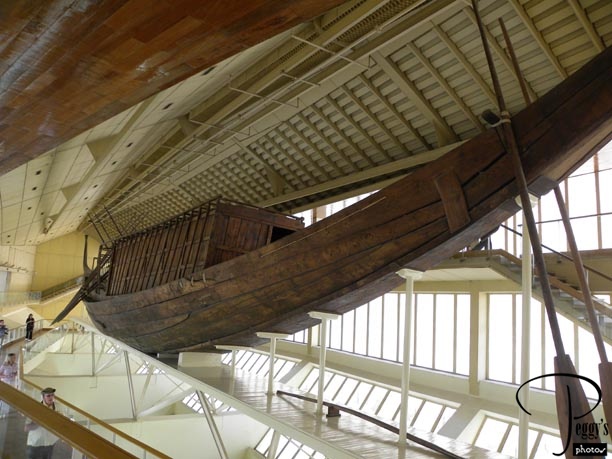
The actual solar boat put back together.

The Solar Boat Museum
The Solar Boat Museum
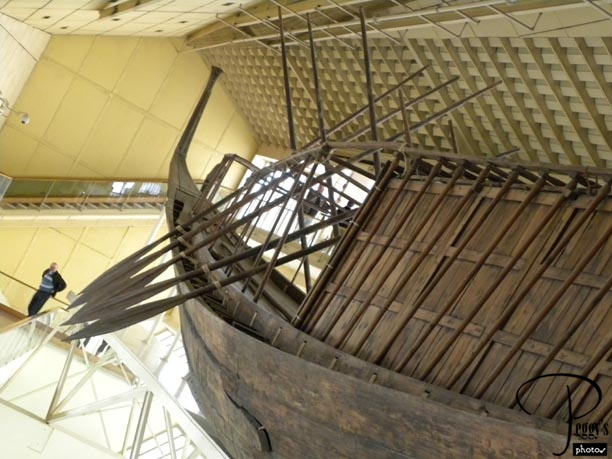
More of the solar boat.

The Solar Boat Museum
On the Way to the Papyrus Store
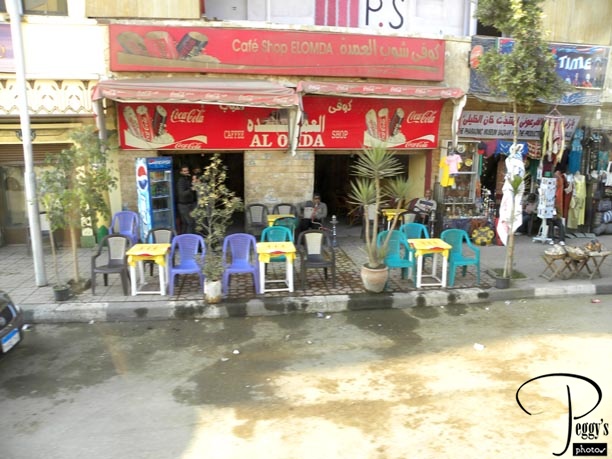
A coffee shop.

On the Way to the Papyrus Store
On the Way to the Papyrus Store
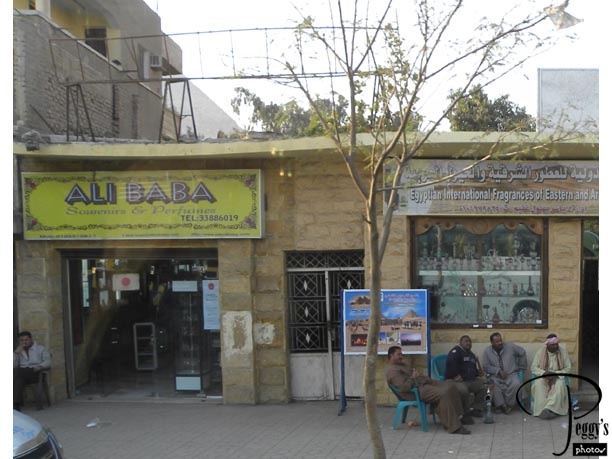
People watching. People, mainly men, would just pull up a plastic chair on a sidewalk and watch the world go by.

On the Way to the Papyrus Store
On the Way to the Papyrus Store
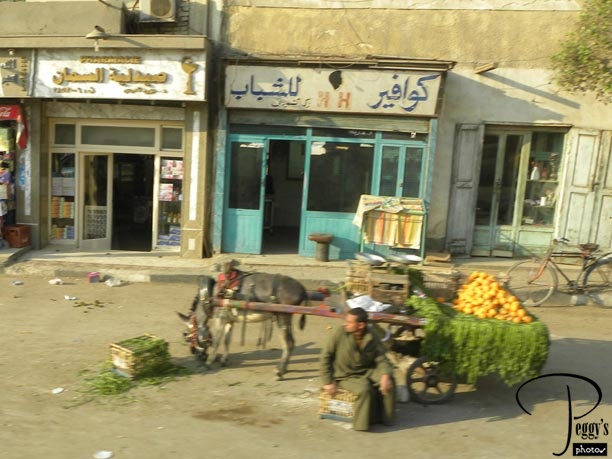
Street scene.

On the Way to the Papyrus Store
On the Way to the Papyrus Store
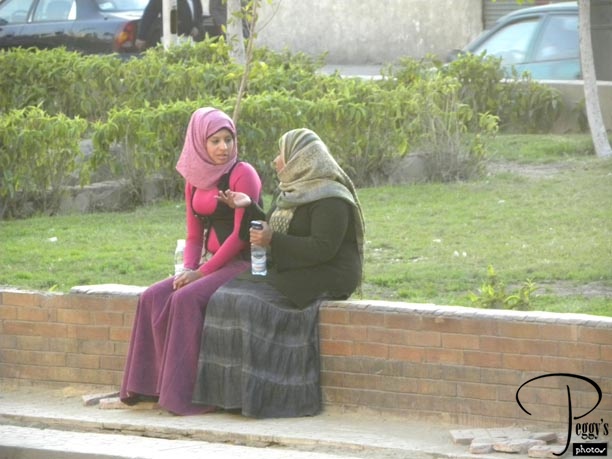
Friends in Islamic dress.

On the Way to the Papyrus Store
On the Way to the Papyrus Store
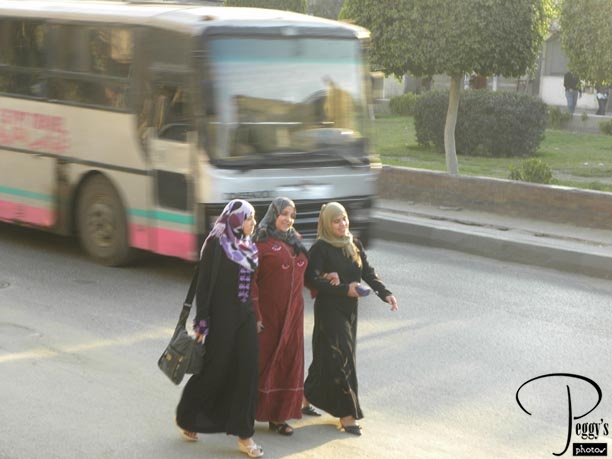
More friends.

On the Way to the Papyrus Store
On the Way to the Papyrus Store
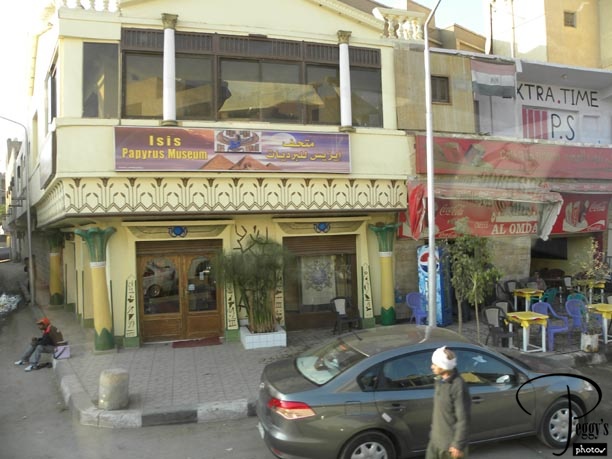
Passing a papyrus store. We didn’t stop at this one. Papyrus stores are a big thing in Cairo.

On the Way to the Papyrus Store
The Papyrus Store
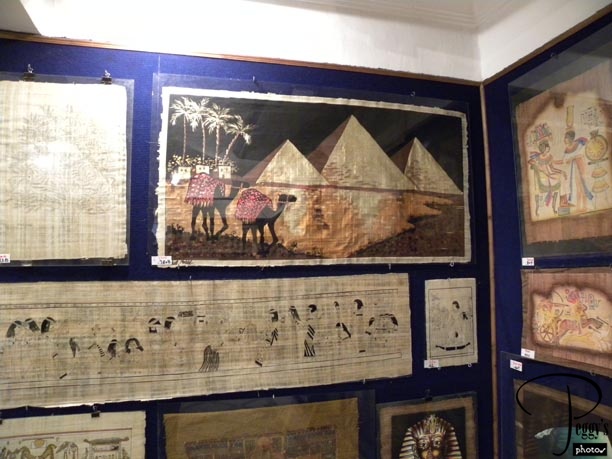
We first had a short demonstration of how papyrus is prepared for painting on. An involved process. Photo: Some of the papyrus paintings for sale in this store.

The Papyrus Store
The Papyrus Store
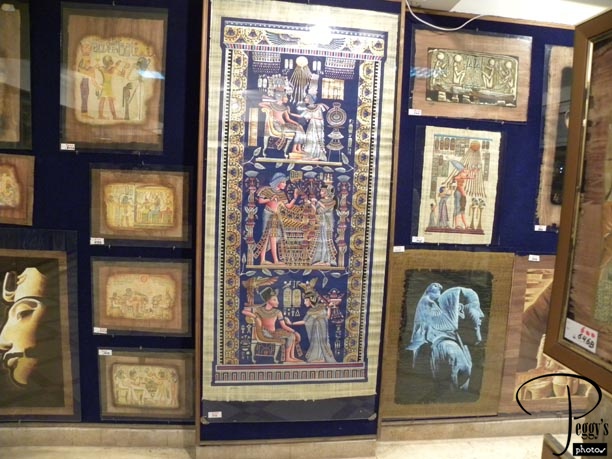
More papyrus paintings.

The Papyrus Store
The Papyrus Store
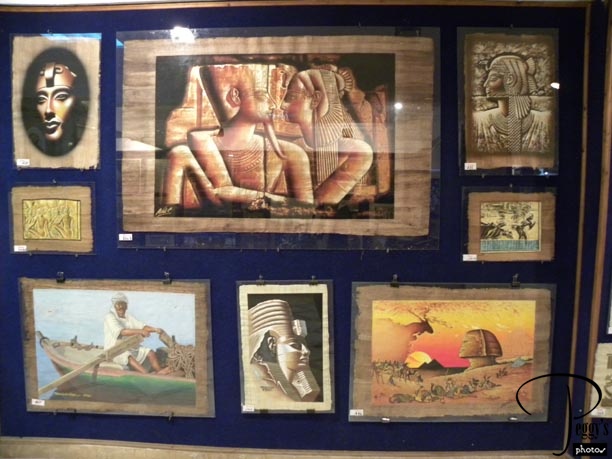
And more.

The Papyrus Store
The Papyrus Store
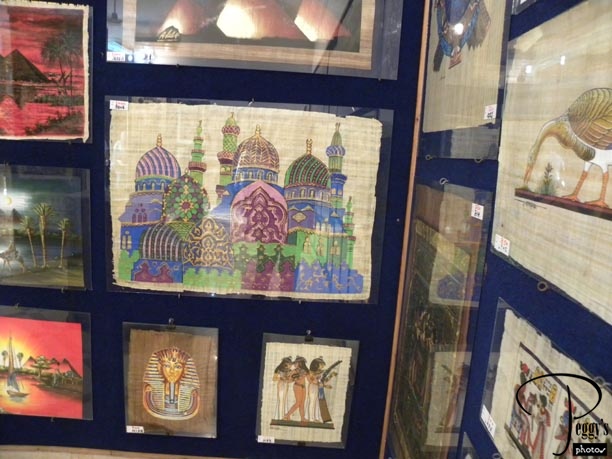
I wanted to buy the painting in the middle until I was told its cost––too much for me.

The Papyrus Store
The Papyrus Store
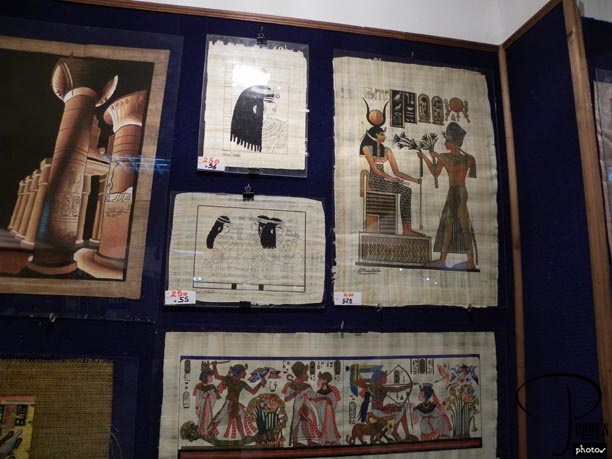
I bought the middle painting, second row, of the two Egyptian women. By buying it, I was given a discount on another papyrus painting, which I didn’t take a photo of.

The Papyrus Store
The Oasis Hotel
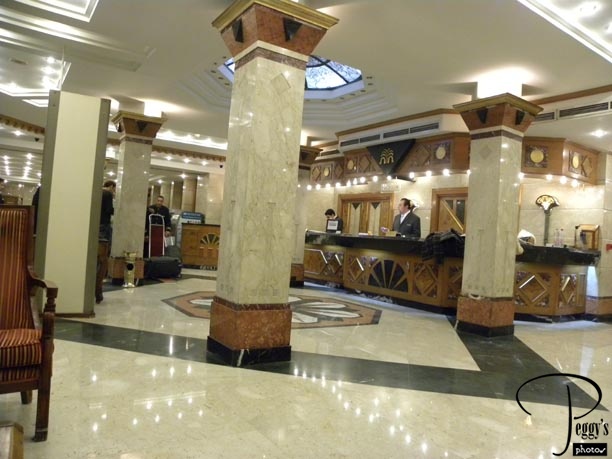
Finally, we are at our hotel, about 6:30 p.m. I was in a rush––I had reserved a tour before traveling to Egypt through viator.com to see the Cairo Light Show. I had trouble today getting in touch with the tour operator, but Amro was able to find out that I would be picked up at 7:15 p.m. (If you are on a tour and you reserve an individual tour for yourself, don’t only give your hotel name to the tour operator but also the date you are arriving at the hotel and that you are on a tour and give its name––I didn’t do this and when the tour operator called the hotel, the hotel didn’t have a reservation in my name.) Photo: Our hotel’s lobby.

The Oasis Hotel
The Oasis Hotel
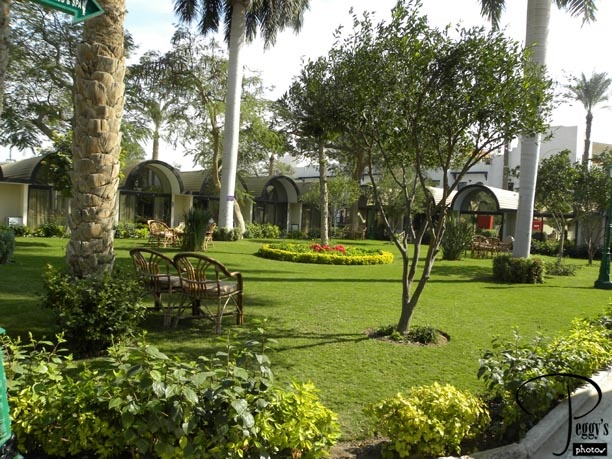
The Oasis Hotel, taken the next day.

The Oasis Hotel
The Oasis Hotel
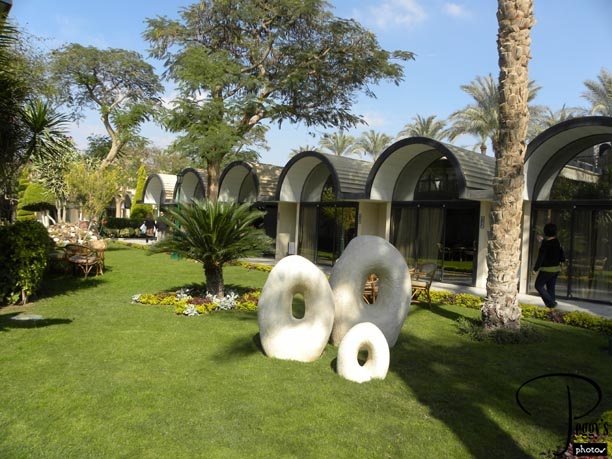
Photo also taken the next day. Interesting donut sculpture.

The Oasis Hotel
The Cairo Light Show
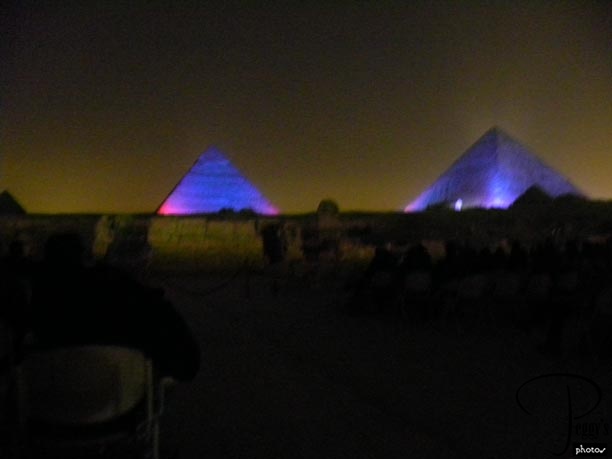
Photo taken at the Cairo Light Show at Giza. I was picked up by a private car with a driver and my tour guide at 7:15 a.m. (All the tours of Cairo offered by viator.com all are private tours––no bus tours picking you up at your hotel.) It took us about 45 minutes to reach Giza because we were in the evening traffic jam, actually heading to the central city. Traffic was flowing easily in the other direction. The guide apologized for the heavy traffic––I told him about the traffic jams in Los Angeles, with 6–8 lanes in both directions only creeping along during rush hour. Here, it was only three lanes on either side, not a big event for someone from LA.
The light show was very touristy, which I expected. The story of ancient Egypt was told over a loud speaker and the pyramids were lit up. I went there to take photographs and was pleased, but it was quite chilly there. My other photos of the light show are on a slide show:
Go to http://wp.peggysphotos.com/gaza–pyramids–cairo–egypt/ or to Slide Shows and then to Giza Plateau, Cairo, Egypt.

The Cairo Light Show
On the Way Back to the Hotel
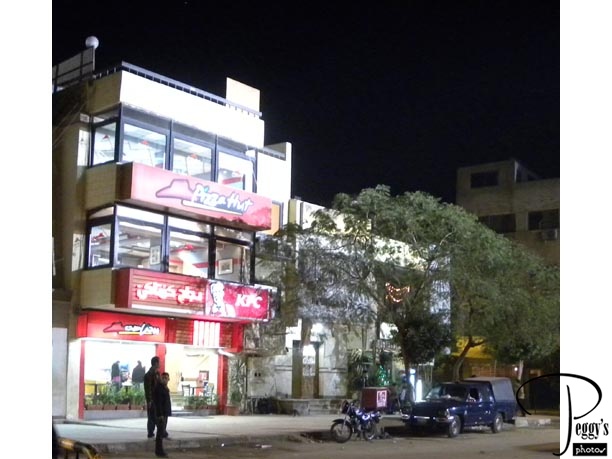
Seen on the way back to the hotel: Pizza Hut and KFC. The Egyptians have an interesting way of driving: if someone wants to pass someone on the left or the right, even without wanting to change lanes, they beep to let the cars in front know they are about to do this. I think drivers believe they can increase their speed by doing this––Amro was surprised I got back so early. I think it took us about 6 minutes to get back––six very harrowing minutes! Amro said that being taken around on a bus saved us from finding out how Egyptians actually drive.

On the Way Back to the Hotel
Back at the Oasis Hotel and the Cairo Protests

Photo: our hotel’s pool at night. After getting back to the hotel, in one piece, I ate dinner in the lounge and then e–mailed my family. Amro told us that protests were scheduled in Cairo for the next day at 12 p.m. This changed our itinerary for the next day––we were previously going to the Egyptian Museum in the afternoon, which is located next to the protest area; now we were going to go in the morning. Amro said that there were protests in Cairo before but not very large. We would have to wait to see how big this protest was. He was concerned because a call was out to block the highways. I e–mailed home about tomorrow’s protest and that no one should worry about me as we would not be in the protest area when it was being held.
